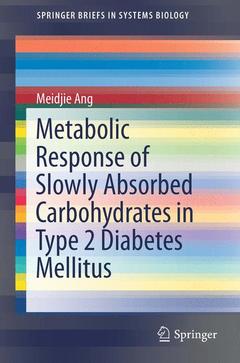1. Introduction
1.1. Problem Statement and Aims
1.2. Outline
2. Background and Objectives
2.1. Diabetes Mellitus
2.1.1. Diagnostic Criteria
2.1.2. Classification
2.2. Glucose Homeostasis
2.2.1. Role
2.2.2. Regulatory Factors and Actions
2.2.3. Regulation of Glucose Homeostasis
2.2.3.1. Postabsorptive State
2.2.3.2. Postpr
andial State
2.2.4. Abnormal Glucose Homeostasis in Type 2 Diabetes Mellitus
2.2.4.1. Pathogenesis
2.2.4.2. Metabolic Alterations
2.3. Glycemic Control
2.3.1. Glycemic Goals of Therapy
2.3.2. Low Glycemic Index Diet for Glycemic Control
2.3.3. Isomaltulose
2.3.3.1. Digestion
2.3.3.2. Absorption
2.3.3.3. Metabolism and Excretion
2.3.3.4. Human Studies on Glucose Metabolism
2.3.4. Co‐Administrat
ion of Carbohydrate and Protein
2.4. Objectives
3. Methods
3.1. Subjects
3.2. Study Design
3.2.1. Isomaltulose/Sucrose‐Clamp Study
3.2.1.1. General Methodology
3.2.1.2. Experimental Procedure
3.2.2. Isomaltulose‐Protein Study
3.3. Analytics
3.3.1. Measurement of Plasma Glucose Concentrations
3.3.2. Measurement of Plasma Hormone Concentrations
3.3.2.1. Insulin
3.3.2.2. C‐Peptide
3.3.2.3. Glucos
e‐Dependent Insulinotropic Peptide
3.3.2.4. Glucagon‐Like Peptide‐1
3.3.2.5. Glucagon
3.3.3. Measurement of Plasma Amino Acid Concentrations
3.3.4. Measurement of Stable Isotope Ratios
3.3.4.1. Plasma [6,6‐2H2]glucose and [13C]glucose Tracer‐to‐Tracee Ratios
3.3.4.2. Breath 13CO2
3.4. Calculations
3.4.1. Plasma Glucose Turnover
3.4.1.1. Total Glucose Rates of Appearance
3.4.1.2. Oral Glucose Rates of Appearance
3.4.1.3. Endogenous Glucose Production
3.4.1.4. Total Glucose Rates of Disappearance
3.4.1.5. Splanchnic Glucose Uptake
3.4.2. Insulin Sensitivity
3.4.2.1. Fasting Insulin Sensitivity
3.4.2.2. Postprandial Insulin Sensitivity
3.5. Statistics
3.5.1. Sample Size
3.5.2. Statistical Analysis
4. Results
4.1. Isomaltulose/Sucrose‐Clamp Study
4.1.1. Subjects’ Characteristics
4.1.2. Plasma Glucose Concentrations
4.1.3. Plasma Hormone Concentrations
4.1.3.1. Insulin
4.1.3.2. C‐Peptide
4.1.3.3. Glucagon
4.1.3.4. Glucagon‐Like Peptide‐1
4.1.3.5. Glucose‐Dependent Insulinotropic Peptide
4.1.4. Breath 13CO2
4.1.5. Glucose Infusion Rates
4.1.6. Plasma Glucose Turnover
4.1.6.1. [6,6‐2H2]glucose and [13C]glucose Tracer‐to‐Tracee Ratios
4.1.6.2. Total
Glucose Rates of Appearance<
4.1.6.3. Oral Glucose Rates of Appearance
4.1.6.4. Endogenous Glucose Production
4.1.6.5. Total Glucose Rates of Disappearance
4.1.6.6. Splanchnic Glucose Uptake
4.1.6.7. One‐Compartment versus Two‐Compartment Models
4.1.6.8. Fractional [6,6‐2H2]glucose Rates of Disappearance
4.1.7. Insulin Sensitivity Index
4.2. Isomaltulose‐Protein Study
4.2.1. Subjects’ Characteristics
4.2.2. Plasma Glucose Concentrations
4.2.3. Plasma Insulin Concentrations
4.2.4. Insulin Sensitivity Index
4.2.5. Plasma Amino Acid Concentrations
5. Discussion
5.1. Methodology
5.2. Glucose Absorption
5.3. Plasma Glucose Concentrations
5.4. Plasma Hormone Concentrations
5.4.1. Insulin and C‐Peptide
5.4.2. Glucagon
5.4.3. Incretins
5.5. Plasma Glucose Turnover
5.5.1. Systemic Glucose Appearance
5.5.2. Oral Glucose
Appearance
5.5.3. Endogenous Glucose Production
5.5.4. Splanchnic Glucose Uptake
5.5.5. Systemic Glucose Disappearance
5.6. 13C‐Breath Test
5.7. Insulin Sensitivity
5.8. Glucose Infusion Rates
5.9. Plasma Amino Acids Concentrations
5.10. Limitations
5.11. High Protein Diets in Type 2 Diabetes Mellitus
5.12. Benefits of Low Glycemic Inde
x Diet
5.13. Conclusions and Outlook
6. Summary
Bibliography
Acknowledgment





